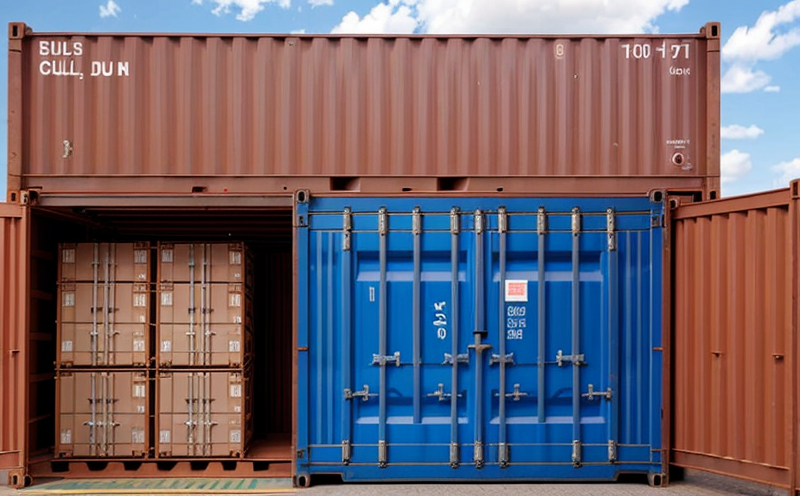USP Weathering Resistance Packaging Testing
The USP Weathering Resistance Packaging Test is a critical procedure used to evaluate the integrity and durability of packaging materials intended for pharmaceutical products. This test ensures that containers can withstand environmental conditions without compromising product quality or safety, which is essential in ensuring compliance with regulatory standards.
During this test, packaging materials are subjected to a series of environmental stressors including temperature fluctuations, humidity, light exposure, and chemical interactions. These factors simulate real-world conditions that the packaging may encounter during storage and transportation. The goal is to determine if the container can protect its contents from degradation caused by these elements.
The test begins with selecting appropriate specimens based on the type of product being packaged. Common materials tested include glass vials, plastic bottles, foil pouches, and more. Each specimen undergoes rigorous testing under controlled environmental conditions designed to mimic various storage scenarios. For instance, some tests may involve exposing samples to high temperatures followed by rapid cooling cycles, or prolonged exposure to ultraviolet light.
The results of the USP Weathering Resistance Packaging Test provide valuable insights into both short-term and long-term performance of packaging solutions. This information is crucial for manufacturers in making informed decisions about material selection, design modifications, and overall quality assurance processes. By identifying potential issues early on, companies can implement corrective measures before reaching market launch stages.
It's important to note that the USP Weathering Resistance Packaging Test does not only focus on physical properties like strength or flexibility but also considers how well the packaging prevents contamination from external sources such as dust particles, moisture intrusion, and microorganisms. Compliance with this test is particularly vital for ensuring the stability of biopharmaceuticals which are especially sensitive to environmental changes.
The robustness of container closure systems plays a key role in safeguarding drug products against degradation during distribution and storage. Therefore, it's imperative that all components used within these closures adhere strictly to prescribed guidelines laid out by regulatory bodies like the United States Pharmacopeia (USP).
Applied Standards
| Standard | Description |
|---|---|
| USP Ph. 1207 | This USP chapter outlines methods for determining the resistance of containers to degradation caused by environmental factors such as light, heat, and humidity. It includes specific procedures for testing various types of closures and container materials used in pharmaceutical packaging. |
| ASTM D1525 | An American Society for Testing Materials (ASTM) standard that provides guidelines for accelerated aging tests on plastic containers. This includes exposure to heat, ultraviolet radiation, and other environmental stresses intended to predict long-term performance under normal storage conditions. |
Why Choose This Test
The USP Weathering Resistance Packaging Test is an indispensable tool for ensuring the reliability and safety of pharmaceutical packaging. By conducting this test, manufacturers can significantly reduce risks associated with product contamination or deterioration due to improper container design or material selection.
This testing ensures that packaged drugs remain stable throughout their shelf life, thereby maintaining efficacy and potency. Additionally, compliance with USP standards helps build consumer trust by demonstrating adherence to stringent quality control measures. For companies operating internationally, meeting these requirements is crucial for gaining access to global markets while avoiding costly recalls or withdrawals.
Moreover, the test serves as a valuable resource during research and development stages when engineers are exploring new materials or modifying existing designs. It provides critical feedback on how well different options perform under various environmental conditions, allowing for continuous improvement in product quality.
Customer Impact and Satisfaction
- Ensures compliance with stringent regulatory requirements set forth by USP guidelines.
- Promotes trust among consumers who value safety and efficacy in their medication.
- Aids in reducing the occurrence of product recalls or withdrawals due to packaging failures.
- Facilitates smoother supply chain operations through consistent quality assurance practices.
- Encourages innovation by providing insights into which materials work best under specific conditions.





